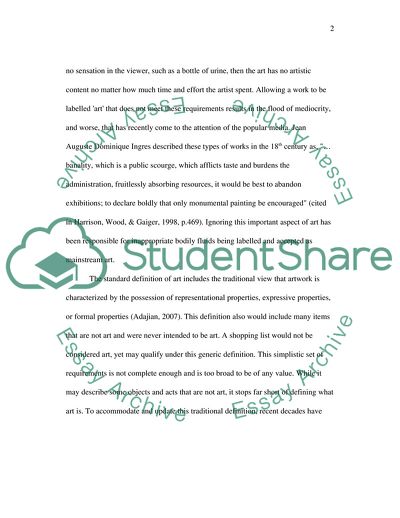Cite this document
(Art: A Futile Endeavour or an Important Task Assignment, n.d.)
Art: A Futile Endeavour or an Important Task Assignment. https://studentshare.org/visual-arts-film-studies/1713378-defining-art-a-futile-endevour-or-an-imoportant-task-critically-discuss
Art: A Futile Endeavour or an Important Task Assignment. https://studentshare.org/visual-arts-film-studies/1713378-defining-art-a-futile-endevour-or-an-imoportant-task-critically-discuss
(Art: A Futile Endeavour or an Important Task Assignment)
Art: A Futile Endeavour or an Important Task Assignment. https://studentshare.org/visual-arts-film-studies/1713378-defining-art-a-futile-endevour-or-an-imoportant-task-critically-discuss.
Art: A Futile Endeavour or an Important Task Assignment. https://studentshare.org/visual-arts-film-studies/1713378-defining-art-a-futile-endevour-or-an-imoportant-task-critically-discuss.
“Art: A Futile Endeavour or an Important Task Assignment”. https://studentshare.org/visual-arts-film-studies/1713378-defining-art-a-futile-endevour-or-an-imoportant-task-critically-discuss.


